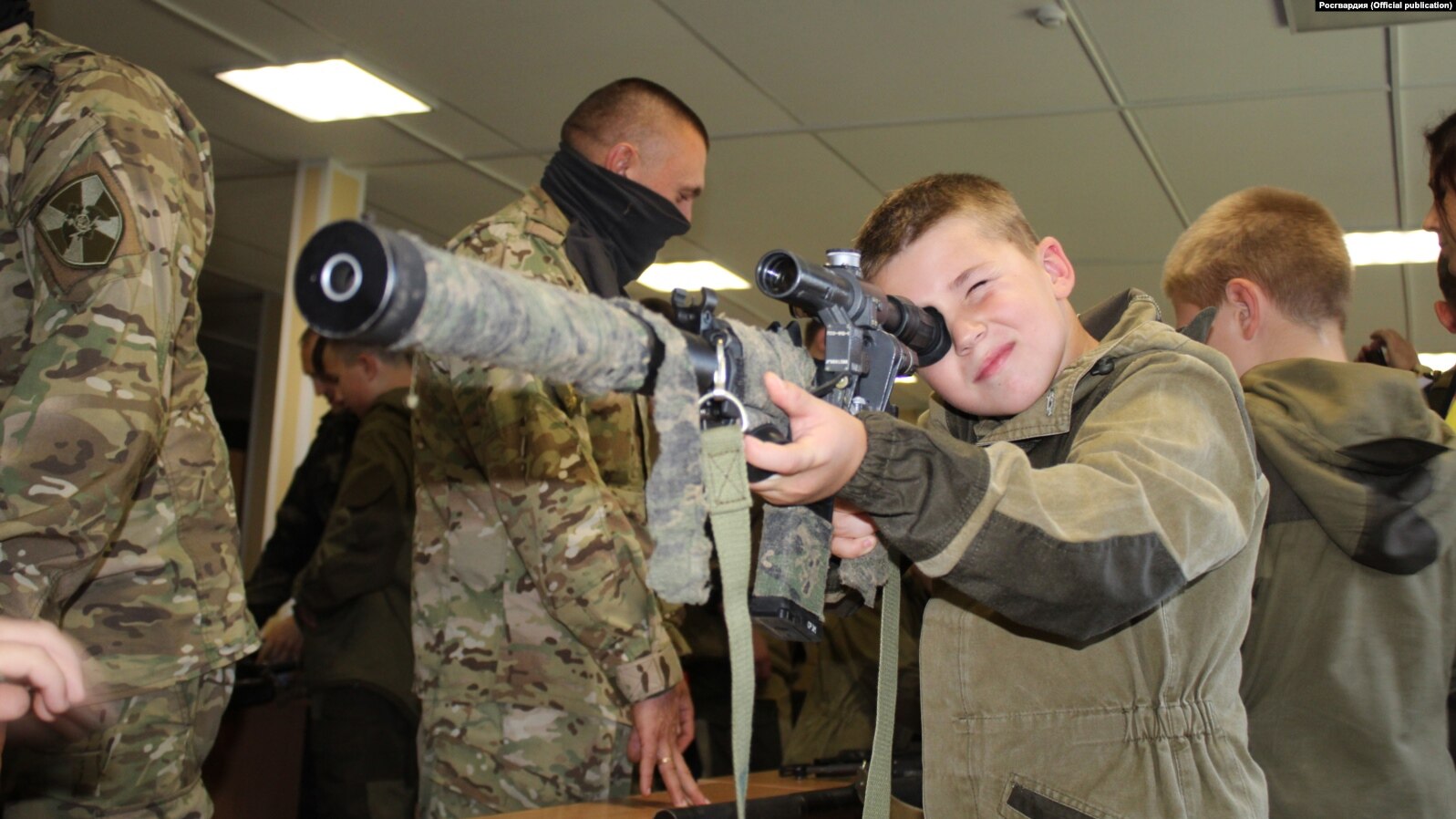Russia incorporated 1.8 million children into its military-patriotic movement Yunarmia [Youth Army], including hundreds of thousands of Ukrainian children from occupied territories.
Yunarmia surpasses adult military forces of 42 leading countries of the world, including the combined army size of the EU.
“This is more than the size of armies in 42 leading countries of the world. More than in the EU. Only China has more,” wrote Mykola Kuleba, the founder of Save Ukraine.
Save Ukraine is a Ukrainian charitable non-profit organization founded in 2014 that focuses on returning of abducted or displaced children from Russian-occupied territories. It has managed to return 637 children thus far.

Russia’s youth army, operating under the patronage of Russia’s Ministry of Defense, teaches children military skills such as assembling assault rifles and marching, while also instilling anti-European sentiments and portraying Ukraine as an enemy.
“They are taught to assemble assault rifles, march, hate Europe, and believe that Ukraine is the “enemy,” Kuleba wrote.
The Yunarmia program established regional headquarters in Crimea following its occupation in 2014, and similar centers have since appeared throughout Russian-controlled areas of eastern Ukraine.
When combined with Russia’s regular military forces, this represents approximately 4.1 million individuals being prepared for potential future conflicts.
Ukrainian intelligence sources earlier reported that the Kremlin is considering deploying 17-18-year-old Yunarmia members in combat operations due to manpower shortages in its occupation forces.
Ukrainian children on occupied areas can become soldiers against their own people
Former Ukrainian Ombudsman Lyudmila Denisova documented that occupation authorities in the self-proclaimed Donetsk and Luhansk regions have been recruiting minors as young as 16 from local “patriotic clubs.”
Approximately 1.6 million Ukrainian children currently remain in Russia or Russian-occupied territories, where they face these militarization efforts.
The Yale Humanitarian Research Lab’s investigation revealed that since 2022, Russia has orchestrated a systematic, state-sponsored program to forcibly deport nearly 20,000 Ukrainian children from occupied territories, primarily Donetsk and Luhansk, to Russia.
Under the guise of “evacuations,” these children, many from orphanages or vulnerable families, have been stripped of their Ukrainian identities through forced adoption, citizenship changes, and re-education programs designed to turn them into loyal Russian citizens and future soldiers.
One 18-year-old Ukrainian girl managed to escape Russia on her own after her family, influenced by Russian propaganda, had relocated there following the full-scale invasion in 2022.
The girl told that in a Russian school she faced intense bullying and propaganda, including classmates shouting nationalist slogans and demeaning Ukrainians. Determined to maintain her Ukrainian identity, she continued her Ukrainian studies online and kept in touch with friends back home.
After saving money and receiving help from volunteers, she endured a difficult journey involving interrogations at checkpoints before successfully crossing back into Ukraine, while her family stayed in Russia.




